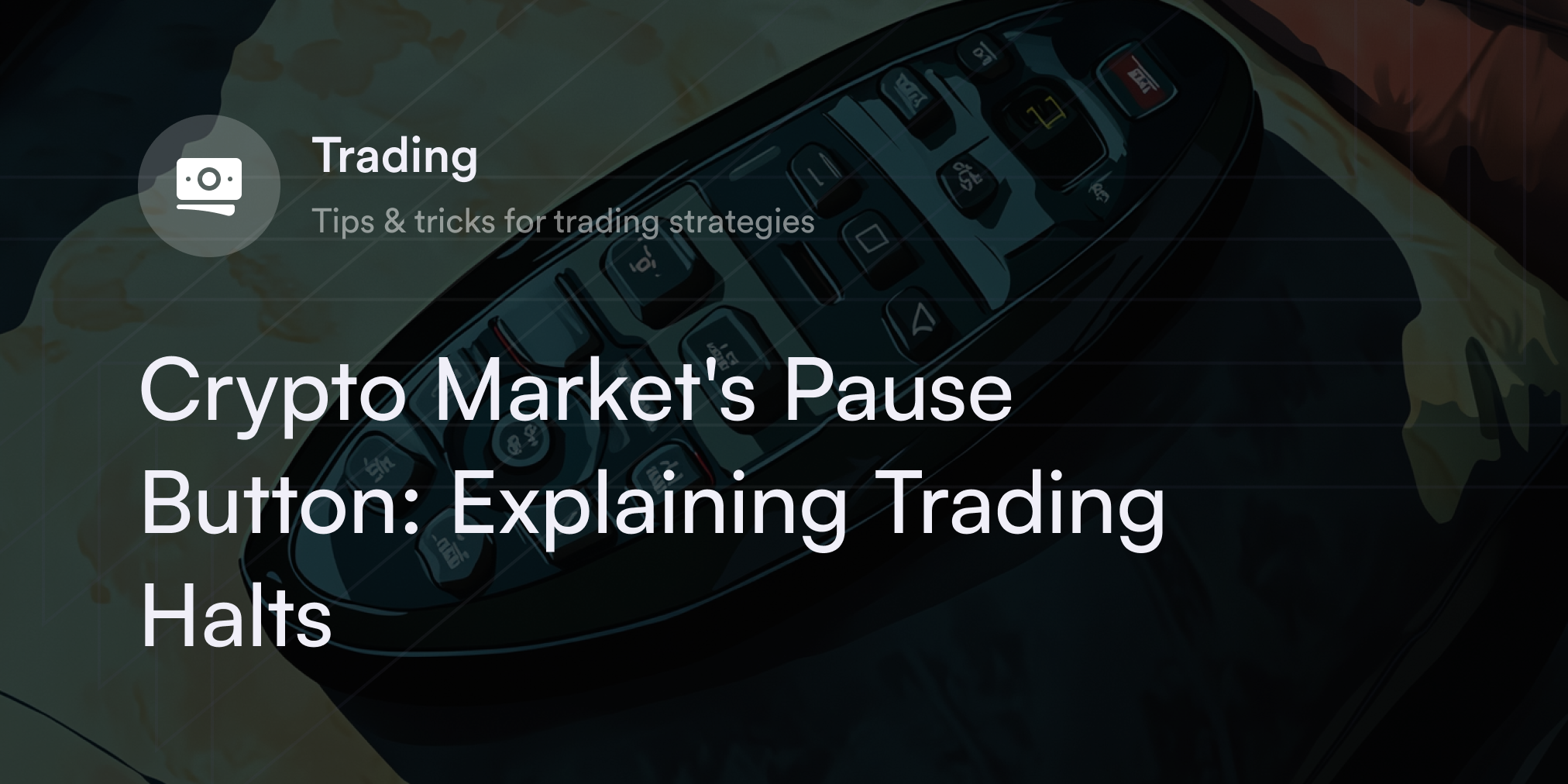


The cryptocurrency market is famous for its wild price dynamics, but there are times when volume and volatility for digital assets wane. For example, during multiyear bear markets called crypto winters, it’s rare for cryptocurrencies to break out of tight trading ranges.
Some long-term HODLers patiently wait out these dull periods, but there are tactics to generate income even when the crypto market slows down. Enter the iron condor strategy, a popular derivatives technique often used to exploit price dynamics in low-volatility environments.
Learning the iron condor adds nuance to a crypto trader’s skill set, but it isn’t the simplest strategy to set up. Let’s explore the proper way to "take flight" with this options strategy and its pros and cons.
What is an iron condor strategy in crypto?
The iron condor refers to a four-part (or four-leg) options strategy traders often use to profit when cryptocurrency prices stay in a sideways range. These four legs are made up of two other options strategies: the bear call spread and the bull put spread.
In both of these two-leg techniques, a derivatives trader buys and sells options simultaneously for the same cryptocurrency with the same expiration date. Traders who use bear call or bull put spreads also receive the difference in premiums (or credit) in their account to enter these positions.
The critical difference between a bear call spread and a bull put spread is the former profits when a cryptocurrency’s price declines, while the bull put spread gains value if the digital asset’s price rises.
By combining a bear call spread above and a bull put spread below a cryptocurrency’s price, traders create a channel where they hope the crypto asset stays for the duration of their iron condor. If the cryptocurrency remains between the condor’s wings, all their options expire worthless, and the trader keeps the full credit they received at the start of the trade.
How to build an iron condor option strategy
Envision the iron condor as three horizontal price channels on a cryptocurrency chart with four lines. The top two lines symbolize the strike prices for the options in the bear call spread, while the lower two lines are the strikes for the bull put spread.
To create a bear call spread, sell a call with a strike above or at the cryptocurrency’s current price and buy an out-of-the-money (OTM) call at a higher strike price. For the bull put spread, sell a put with a strike below or at the cryptocurrency’s price and buy an OTM put with a lower strike. The zone between the strike prices for the short call and short put represents the maximum profit zone for the iron condor, while the strikes for the long call and long put cap potential losses if the cryptocurrency rises or falls by expiration.
For example, suppose a crypto trader believes the price of Ethereum (ETH) will stay flat for the next month around its current price of $2,500 per coin. To profit from this thesis, the trader sets up an iron condor with the following specifications:
Sell one ETH call option with a strike of $2,700 for a $40 premium
Buy one ETH call option with a strike of $2,800 for a $25 premium
Sell one ETH put option with a strike of $2,300 for a $40 premium
Buy one ETH put option with a strike of $2,200 for a $25 premium
The net credit to enter this trade is $30, representing the two premiums received (i.e., $40) minus the two spent (i.e., $25). $30 is also the maximum profit the trader hopes to gain from the iron condor at expiration.
To determine the two break-even prices for this ETH iron condor strategy, the trader adds the strike for the short call to the total premium received and subtracts the short put strike from the premium. The numbers work out as follows in this ETH example:
Lower break-even price: $2,300 - $30 = $2,270
Upper break-even price: $2,700 + $30 = $2,730
For this trade to be profitable, the trader needs ETH to stay above $2,270 and below $2,730 by expiration. If ETH falls outside of this range, the trader faces a max loss, which is limited to the difference between each wing’s width minus the premium received:
($2,800 - $2,700) - $40 = $60
($2,300 - $2,200) - $40 = $60
Pros and cons of using iron condor options in crypto
The iron condor is one of the most involved derivative strategies, but it’s a useful technique in a sideways market. Consider the strengths and weaknesses of implementing an iron condor before deciding whether to implement this strategy.
Pros of iron condor for crypto trading
Well-defined risk-reward profile
Both the gains and losses in an iron condor strategy are limited by the strike prices a trader chooses, making it easy to calculate the maximum risk and reward before entering a trade.
Plus, since it’s impossible for a cryptocurrency to cross the upper and lower break-even levels at expiration, traders only pay the maximum loss for one of the two spreads in an unfavorable trade.
Profitable low-volume environments
When trading volumes and average price volatility dip, the iron condor provides a way to generate income even as cryptocurrencies are stuck in tight trading ranges. As long as market conditions remain relatively calm, crypto options traders have a reliable way to profit without relying on momentum spikes.
Potential for hedging
Sometimes, traders use iron condors to offset losses (aka hedging) in their long-term portfolios when the market enters bearish phases. The profits from iron condors reduce the average cost per coin in a HODL account, so cryptocurrencies don’t need to climb as high to reach a trader’s break-even price.
Easily customizable
The only non-negotiable feature in an iron condor strategy is every option has to have the same expiration date. Besides this, traders can adjust the width of their spreads and the distance between the put and call strikes to fit their risk tolerance and opinions on the current market conditions.
Cons of iron condor for crypto trading
High entry fees
Iron condors cost more to set up than other derivatives strategies. Since this tactic has four legs, traders have to pay fees on four options every time they enter the trade, which cuts into total profitability.
Limited profit potential
Speaking of profitability, the gains in an iron condor strategy are capped. Even with a winning trade, there’s no way for crypto traders to make more than the premiums they collect minus commission fees.
High learning curve
If traders aren’t familiar with crypto derivatives and vertical spreads, understanding or successfully executing an iron condor isn’t easy. Traders new to options contracts have to spend extra time studying the basics of derivatives to avoid costly errors before attempting an iron condor.
Vulnerable to market volatility
Iron condor is a low-volatility strategy, meaning it’s extra sensitive to sudden price movements in the crypto market. If crypto prices unexpectedly plunge or pump, there’s a high probability a trader’s iron condor won’t work out.
Explore crypto perps trading on dYdX
Unlike options strategies like the iron condor, crypto perpetuals offer a way to speculate on digital assets without worrying about multi-leg setups and expiry dates. On a decentralized perpetuals exchange like dYdX, eligible traders set their preferred long or short positions and close their contracts whenever they want. Perpetuals use a unique fee-and-rebate structure to incentivize traders and ensure derivative prices always match market prices.
To learn more about how trading perpetuals on dYdX works, visit our official blog for details on our latest products and services. Also, check out dYdX Academy for more helpful guides on crypto trading and decentralized finance (DeFi), and start trading on dYdX today.
Disclosures
The content of this article (the “Article”) is provided for general informational purposes only. Reference to any specific strategy, technique, product, service, or entity does not constitute an endorsement or recommendation by dYdX Trading Inc., or any affiliate, agent, or representative thereof (“dYdX”). Use of strategies, techniques, products or services referenced in this Article may involve material risks, including the risk of financial losses arising from the volatility, operational loss, or nonconsensual liquidation of digital assets. The content of this Article does not constitute, and should not be considered, construed, or relied upon as, financial advice, legal advice, tax advice, investment advice, or advice of any other nature; and the content of this Article is not an offer, solicitation or call to action to make any investment, or purchase any crypto asset, of any kind. dYdX makes no representation, assurance or guarantee as to the accuracy, completeness, timeliness, suitability, or validity of any information in this Article or any third-party website that may be linked to it. You are solely responsible for conducting independent research, performing due diligence, and/or seeking advice from a professional advisor prior to taking any financial, tax, legal, or investment action.
You may only use the dYdX Services in compliance with the dYdX Terms of Use available here, including the geographic restrictions therein.
Any applicable sponsorship in connection with this Article will be disclosed, and any reference to a sponsor in this Article is for disclosure purposes, or informational in nature, and in any event is not a call to action to make an investment, acquire a service or product, or purchase crypto assets. This Article does not offer the purchase or sale of any financial instruments or related services.
By accessing this Article and taking any action in connection with the information contained in this Article, you agree that dYdX is not responsible, directly or indirectly, for any errors, omissions, or delays related to this Article, or any damage, injury, or loss incurred in connection with use of or reliance on the content of this Article, including any specific strategy, technique, product, service, or entity that may be referenced in the Article.







